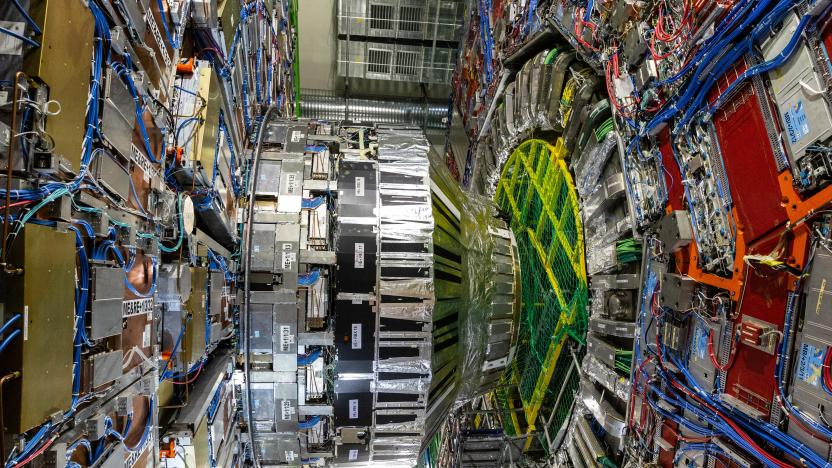standard model
Latest

CERN approves plans for a $23 billion, 62-mile long super-collider
CERN has approved plans to build a $23 billion super-collider 100 km in diameter (62 miles) that would make the current 27 km 16 teraelectron volt (TeV) Large Hadron Collider (LHC) look tiny in comparison.

CERN confirms existence of new particle consistent with Higgs boson (video)
Physics' big announcement had more in common with a leaky product launch than the serious business of re-writing the science books. But slack asset management aside, it's official: a new boson has been observed with a standard deviation of 5 (confidence of 99.9%). The highly anticipated announcement came this morning direct from CERN's press conference (via ICHEP in Melbourne,) and is the result of an intense, ongoing search for the elusive particle. The observation is of a boson particle with a mass of 125.3 ± 0.6 GeV, at a significance of 4.9 sigma. Joe Incandela -- giving the presentation -- said that this is "In agreement with the standard model at 95% confidence range." The boson is the heaviest ever found, and although this is still a preliminary result, it's by far the strongest case yet for the existence of the elusive Higgs. The sought-after particle is essential for supporting the current understanding of sub-atomic world, and its bearing on nuclear, and electromagnetic interactions. The next stage will be to determine the exact characteristics of the new particle and whether it matches the expectations of the Higgs, or is it in fact something more "exotic." This part will take much more time, but for now, a (very) small, but important piece of the puzzle has been found. Update: We're sure you've got many questions, and CERN apparently anticipated this. Check out the more coverage link for a helpful FAQ about everything Higgs. [Image credit: CERN]

Higgs boson just may, possibly, more or less be proven to exist by ATLAS and CMS teams
We had a false alarm over the possible discovery of the theory-unifying Higgs boson last year, but a bit of poking and prodding in subsequent months may well have given us much more definitive evidence of the elusive particle. According to some rare rumors emerging from Nature, both CERN's ATLAS and CMS detectors have seen particle decay signals suggesting the existence of Higgs to within a 4.5 to 5 sigma level of proof -- in other words, very nearly concrete evidence. That's not quite the 5-plus needed to settle the matter, but it's to a much higher level of certainty than before. As if to add fuel to the fire, ScienceNews even located a briefly posted, CERN-made video (sadly, since pulled) saying bluntly that the CMS team had "observed a new particle." Whether or not there's any substance is another matter. Nature hears that scientists are supposedly still working out what to say at an event on Wednesday, while CERN has made the slightly odd claim to ScienceNews that the yanked video is just one of several pre-recorded segments made to cover possible outcomes -- you know, in that "Dewey defeats Truman" sort of way. Unless the scientists have to go back to the drawing board, though, the focus from now on may be more on learning how Higgs behaves than its very existence. Any significant truth could see researchers proving the validity of the standard model of physics just as we're firing up our Independence Day barbecues.

Large Hadron Collider to increase beam energy: Higgs boson can run, not hide
We've seen the Large Hadron Collider running at a record-breaking 7 TeV for short periods, but now CERN is turning it up a notch (to 4 TeV from 3.5) for the rest of the year. The decision comes after an annual performance workshop last week in Chamonix and a report from the CERN Machine Advisory Committee (CMAC). The increase may seem modest compared to the knee-trembling levels of 7 TeV, but it's all part of a broader optimization strategy. Scientists state the new approach should increase the data collected in 2012 to 15 inverse femtobarns -- a three-fold jump from 2011. Even more encouraging is a statement from CERN's Research Director, Sergio Bertolucci, who claims that we should finally know for sure about the existence of the Higgs boson -- either way -- before the LHC enters a temporary shut-down period at the end of the year. Beam yourself over the break for the full press release.


